
 |
 |
|
A part of the book written by Małgorzata Jackiewicz - Garniec and Mirosława Garniec "Chateau's and mansions of the former Eastern Prussia" (www.arta.olsztyn.pl )
Kętrzyn district, Korsze community A village located 9 km north-west of Kętrzyn. As early as in 1328 has the Teutonic knights raised a castle here that was destroyed during the 13-year's war. In the 16th century the village belonged to prince Albrecht who created here knights estates and gave them over to von Egloffstein house. The estate belonged further on to von der Groeben house. Finaly they became the property of Boehm house having by then the area of 450 ha and one grange unit. The owners - Elizabeth Boehm married to Otto Boehmem from house Głowbity (Glowbitten, mansion non existing). They received the estate in Garbno as a wedding gift - they rebuilt it and raised some buildings (1900). Elisabeth Boehm was the foundator of the Landladies Association ("Landwirthschaftliche Hausfrauenverein") - an idea that was spreading wery fast across Germany. In recognition of her contribution Albertine University in Koningsberg assigned her for a honoris causa title. The Boehm marriage left Garbno already in 1911 (because of he illness of the husband) and moved to Koningsberg. In the 20-ties of the 20th century the estate got smaller, the property belonged to Schulz house and was mainly serving as a breeding farm for cattle, horses and milking cows. The old spatial arrangement has remained - a mansion with a large driveway, park and the grange buildings. The mansion has been raised over the remaining of an elder one in the first half of the 19th century in a style referring to classicism." Archival Documents, historical texts, other informations... 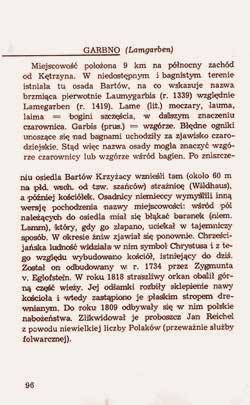 
Old Prussians village 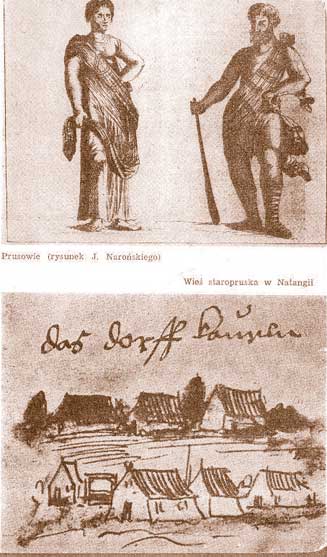 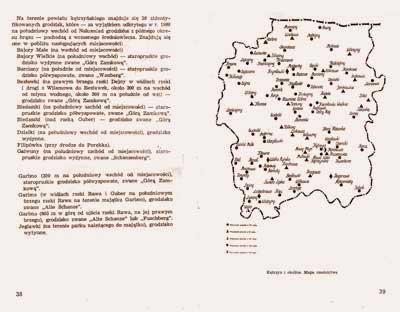 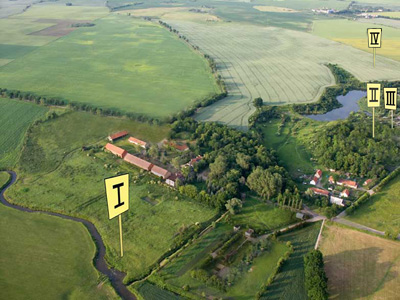 I. Bird’s eye view to the bifurcation of the river Gruber and die Arms of the river Rawa and the outlines of an Old-Prussian village located on the mansion area. II. Fortification "Wildhaus" - built 1328 and destroyed in in-between 1454-1466. III. Old Prussian village "Gora Zamkowa". IV. Village "Fuschberg" / "Alte Chance". A part of the evidence card of architecture monuments and building of mansion - grange unit in Garbno (author of the card: Tadeusz Korowaj, 2004): "GARBNO (germ. Lamgarben) - favorable area circumstances were used by the colonization in earlier historical periods. After occupation of these areas by Teutonic Knights the wood guard - house (Wildhaus) was built here in 1328 that was modified into a brick castle around 1350 and after during the 13 - years (1454 - 1466) war it was destroyed. In the neighborhood of the castle there was an old Prussian settlement called Laumybarbis (1339) or Lamegarben (1419). On the 24th of June 1339 the Grand Master of the Teutonic Knights - Dietrich von Altenburg - gave to the free Prussian, brothers named Thede and Laustene 6 wloks (about 100,8 ha: 1 wloka - an old measure of area = 16,796 ha) and 2 wloks (circa 33,6 ha) for the free Prussian Wnymynse. The name of the village (Lamgarben) comes from Prussian words "garbis"- hill and "lamem" - swamp; "lama" - wet, humid place, so it meant "Hill among swamps" (less possible is origin from word "laume" - witch, so "Hill of witches"). The village was founded on the base of "chelminian law" with the duty to set up tree armed men for defence of the country and for military expeditions whenever the castle calls for arms. According to "Grosse Zinsbuch" from 1437 there were 4 guests - houses, a wind mill and 10 farmsteads in the village - among all Heynrich Kuppryn, Hensil Linnyn, Niclas Lucyn, Premog (they were doubtless Prussians). Four wlok free of charge for the cause of Order (Teutonic Knights) were owned by the church, which is first being mentioned in 1422. Most probably - after the 13-years war the goods were reunited into one. On the 24th of February 1521 the Grand Master of Teutonic Knights Albrecht Hohenzollern gave 14 wloks of area in Garbno to the knight Hieronim von Egloffstein paying the debts, on the magdeburian law with the duty of knights' service. The goods were owned by this family till 1832. During a few dozen years they enlarged their estate by buying the neighboring villages like: Warnikajmy, Kraskowa, Sorkwit and Miłuj (Mrągowo district). In 1666 this estate was divided into 3 parts: landed estates in the surrounding of Mrągowo went to Krzysztof, Abraham Albrecht became the owner of Warnikajmy and Kraskowa, and the oldest brother received Garbno. Albrecht Dietrich Gottfried von Egloffstein was born in Garbno (06.05.1720) (passed away on 11.05.1791 in Arklitach), the son of Abraham Joanna, the foreman of Bagnety (Ragnit), the founder of entailment in Arklitach, where he built the palace and moved the folks' seat (in 1786 he received from the Prussian king the earl title). In 1785 Garbno (Lamgarben), the nobility estate with the wind - mill (Adel Gut und Muhle) had 15 houses and was a property of the mayor A. D. G. von Egloffstein (Eglowstein). In 1820 the nobility estate had 17 houses and 186 citizens. In 1832 the new owner of Garbno became Krystian Bierfreund, and in 1838 this estate was bought by lieutenant Konrad von Redecker, who in 1845 bought also the guest - house, water - mill, windmill, buildings around the church and 9 wloks of an area. In 1848 there were 11 houses and 162 citizens in Garbno. In 1856 Redecker sold Garbno to Edward Kraule. 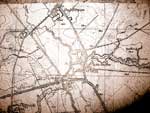
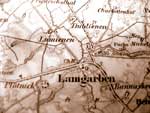

In 1880 the marriage couple Otto and Elżbieta Boehm received the real estate as a wedding present. The estate was bought by the father of the groom, the owner of estates in Głowbity (Glaubitten). The married couple began living in the mansion, built by E. Kraule, while it was still being occupied by E. Kraule's wife after his death. Elżbieta Boehm (1859 - 1943), coming from Rastenburg (presently Kętrzyn) having the possibility to observe the work and everyday life of village women created on the 22nd of February 1898 a Landladies Association (Landwirtschaftlichen Hausfrauenverein). It was the first Assosciation in Germany that had the goal to educate and exchange experience between village women. It was also playing a part in distribution of the food and other goods produced in the village - that were signed with a bee symbol. For her activity E. Boehm has been honored - as the first women in Germany - with the golden collar of the Uniwersity in Koningsberg and was being pronounced as a honorary citizen of that town. With time the idea of such associations began to spread all over Europe and North America. Lately has the portrait of E.Boehm been placed on a series of German post-stamps among other women that have been deserved for Germany's history. On the occasion of 100 years since the foundation of this organization - which took place on the 26th of July 1998 - a memory board has been placed on the front of the mansion. It is both in polish and German and says: "Here lived and worked in years 1880 - 1911 the foundator of the Landladies Association - Elisabrth Boehm nee Steppuhn; a 100 years ago an idea was blooming here that now unites landladies all over the world. Pictures of Garbno Manour, beginning of XX century 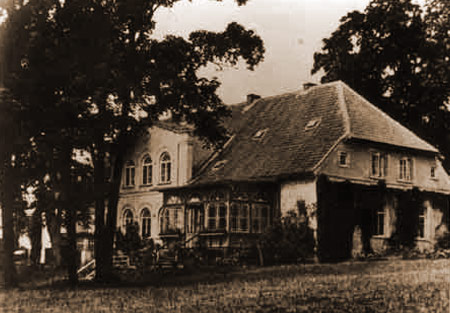 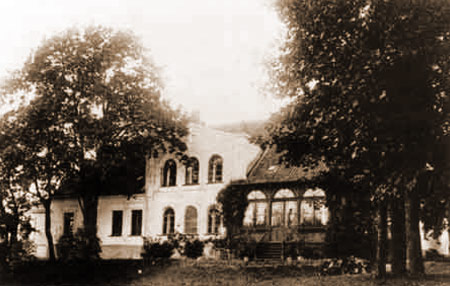  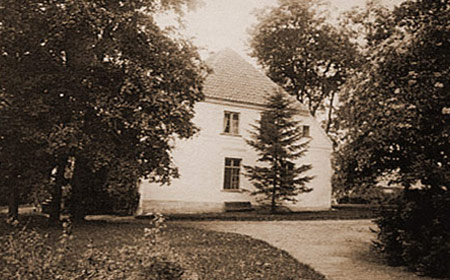 Extract from a Postcard from the collection of E Tyton Garbno in about 1930. History of the city of Korsze from T Korowaj 2007. 
ELISABETH BOEHM: Country Women's Association in 1930. 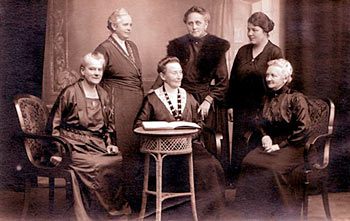
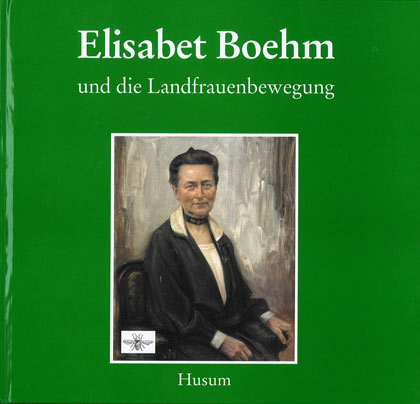
 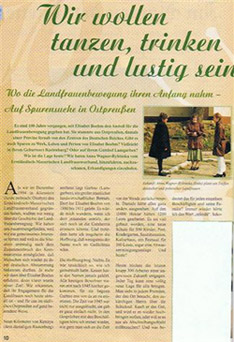
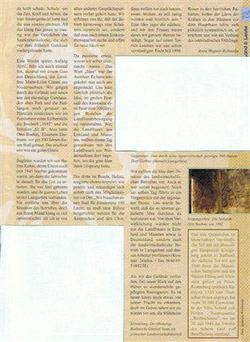
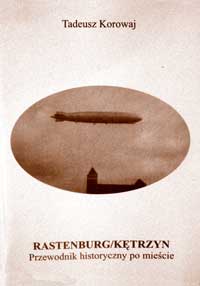
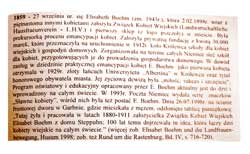 The owner of the estate, Otto Boehm, was keeping the house. In the 80-ties and 90-ties of the 19th century he has built new buildings of the grange unit. In 1898 the estate included 9 buildings, 191 citizens and had the area of 437 ha. In 1909 the knights estate (Rittergut) Garbno (Lamgarben) together with the grange unit Dołeczki (Charlottenhof - non existing anymore) had the area of 257 ha, whereof 184 ha of fields, 20 of meadows, 50 ha of woods, 2 ha of fallow lands and 1 ha of ponds. The stock population was 120 horses, 180 cattle, 50 sheeps and 200 swine. The homestead was specializing in Dutch cattle and milking cows. In 1911 Otto Boehm sold his estate because of illness and moved together with his wife to Koningsberg. Garbno was bought by Erich Schultz - Fademrecht (1884 - 1971) a well known horse breeder for the army who was keeping the house till 1945. The new owner developed the breeding of cart horses for both agriculture and army as well as continued the breeding of milk cows and the production of milk. He also built new living units (for the employees) that were placed over the old ones and he rebuilt a few buildings in the grange unit. Erich Schultz - Fademrecht was also a well known social - economical canvasser. Pictures of Garbno Manour, beginning of XX century. 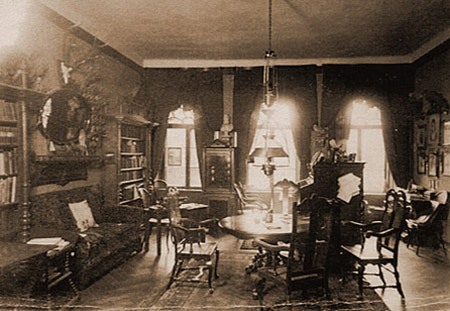 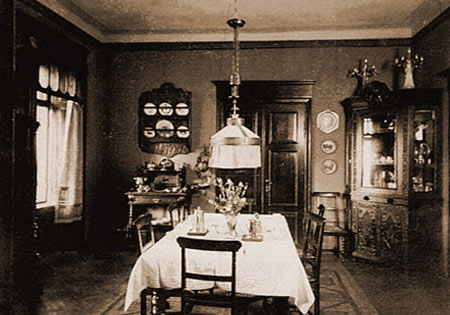 Elisabeth Boehm(?) 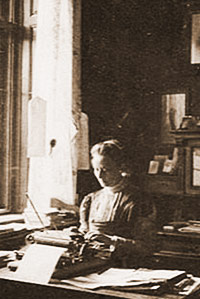
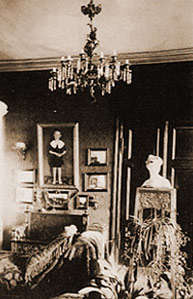 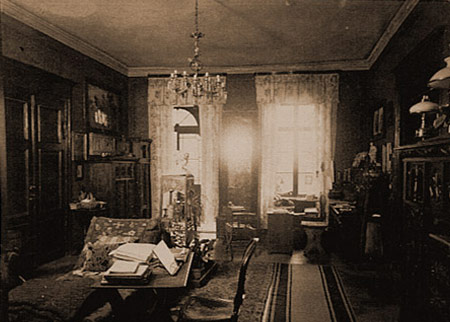  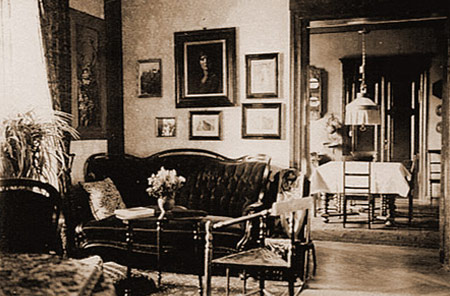  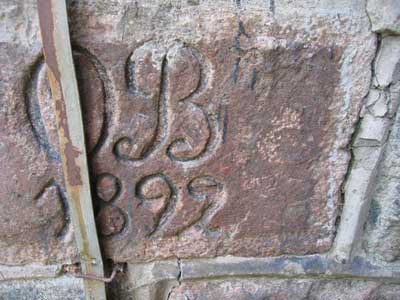 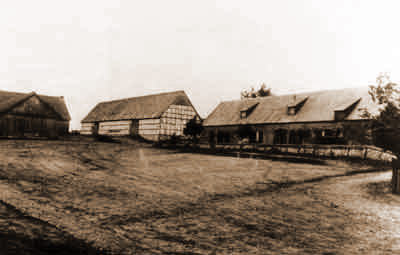 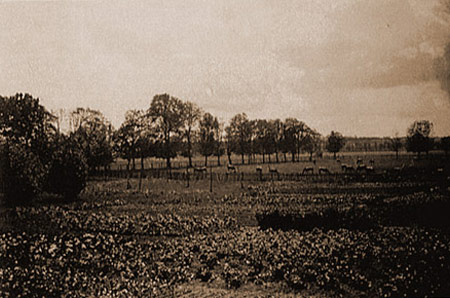 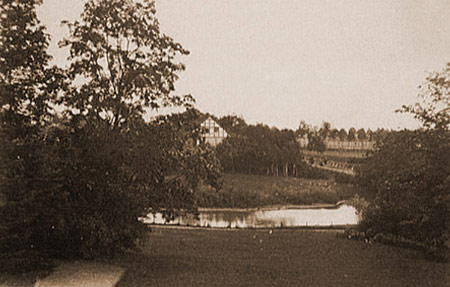 His cart horses breeding farm was a significant one in the Eastern Prussia. He was a council-man in his district, the last chairman of the Horse Riding Association in Rastenburg / Kętrzyn (Reiterverein Rastenburg) and the organisator of horse races on the meadows along Gober river, chairman of the East Prussian Raiffaisen Union in Konigsberg (Raiffeisenverband Ostpreussen in Konigsberg) and president of the district hunting association. In 1913 his property had the area of 353 ha - whereof 280 ha of fields, 50 of meadows, 20 ha of grass-lands, 2 ha of fallow lands and 1 ha of ponds. His stock population was 60 horses, 180 cattle, 40 sheep's and 200 swine. In 1922 the knights estate together with the grange had the area of 349 ha - whereof 276 ha of fields, 50 of meadows, 20 ha of grass-lands, 2 ha of fallow lands and 1 ha of ponds. His stock population was 85 horses, 150 cattle, 40 sheep's and 100 swine. In 1929 - the area of 349 ha - whereof 246 ha of fields, 50 of meadows, 50 ha of grass-lands, 2 ha woods and ponds. His stock population was 80 horses, 150 cattle, 15 sheep's and 100 swine. In 1932 - the area was 349 ha as well - whereof 262 ha of fields, 50 of meadows, 30 ha of grass-lands, 5 ha of fallow lands an 1 ha of ponds. His stock population was 85 horses, 150 cattle, 20 sheep's and 150 swine. There were 652 inhabitants in Garbno in 1939.
Thanks for the materials: |
 |
